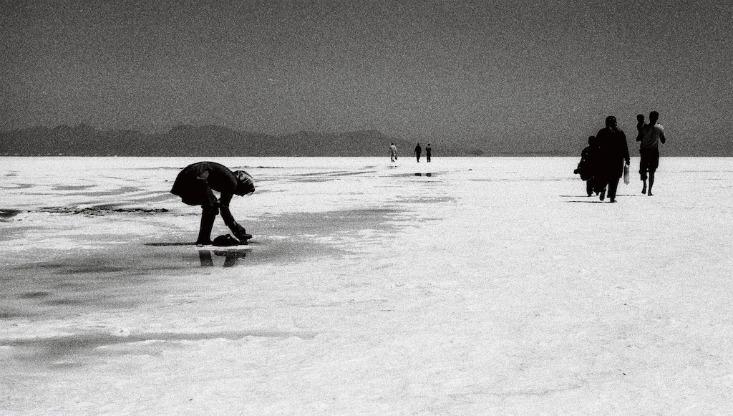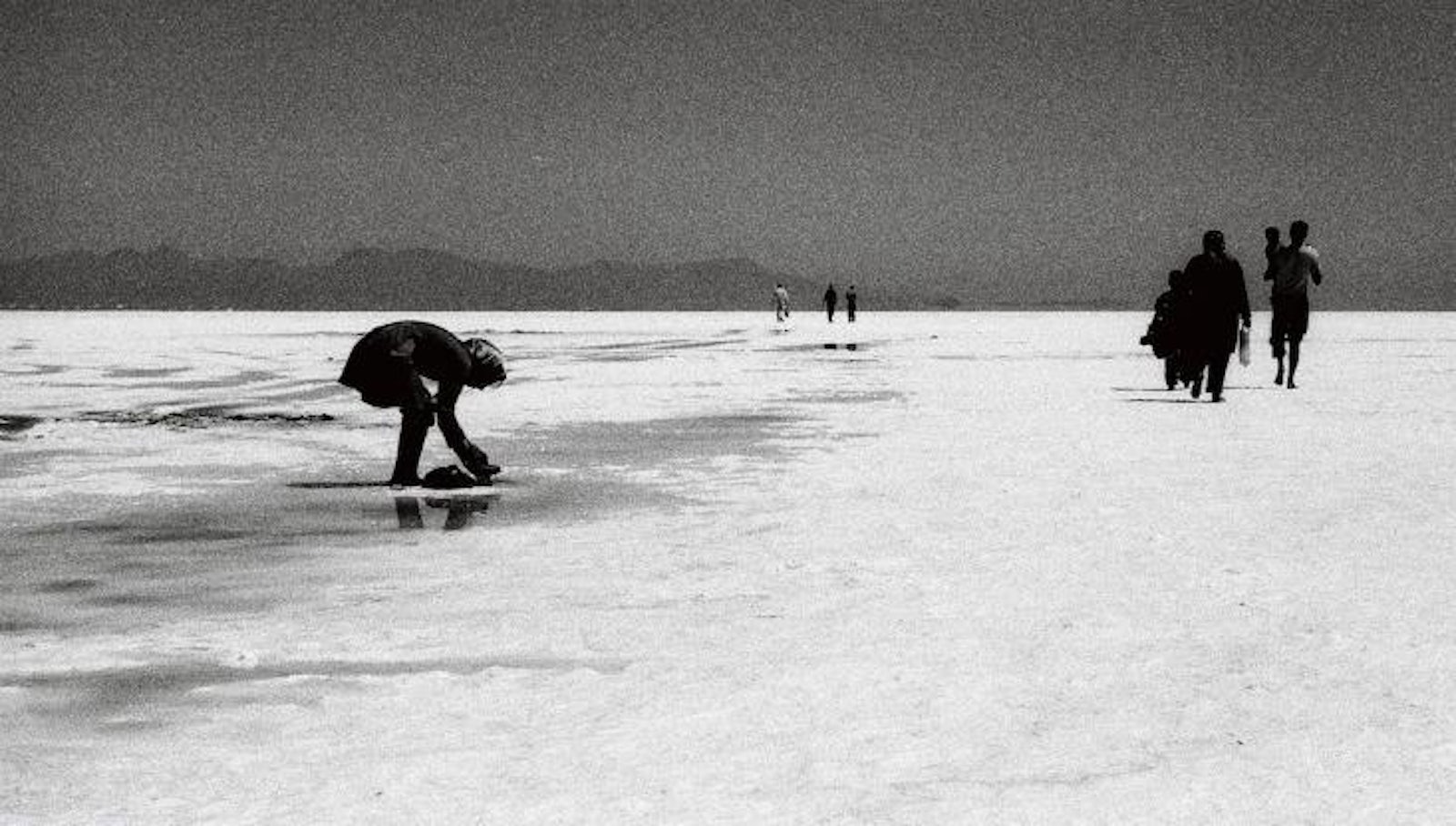
The last time my cousin Houman traveled to Lake Urmia was 10 years ago. He and four of his friends piled into his car and drove for roughly 12 hours, snaking west from the capital of Tehran. Iran is shaped like a teapot; its massive saltwater lake is nestled high in the tip of its spout and flanked by the mountains that run along the Turkish border to the west.
They had heard a lot about it. The largest lake in the Middle East and one of the biggest saltwater lakes in the world, Lake Urmia at its peak was a popular draw for vacationers eager to float in its salty water—known for its healing properties—and sunbathe among the flocks of flamingos, pelicans, and yellow deer that made a home at the lake and its hundred-or-so islands.
This was the picture of Lake Urmia that Houman had gotten from my uncle’s descriptions of traveling to the lake 20 years before. But when he and his friends finally pulled up at Lake Urmia’s shores, all they saw was barren whiteness. Stripping down to bathe, their feet were pierced by the jagged edges of salt crystals lining the lakebed. Emerging from the shallow water, their bodies turned white, stinging from the layers of salt clinging to their skin. There were no animals in sight. “The water was disappearing,” Houman said. “It felt like soon there might not be any left.”
Indeed, the lake stands at roughly 5 percent of its maximum volume, according to the Iran’s Department of Environment. But there is at least recognition of the problem: Last month, President Hassan Rouhani approved a 10-year, $5 billion project to restore the lake, including $500 million in the first year. Individual measures range from funding research to compare the lake with four other bodies that have faced similar shrinkages—including the Aral Sea, between Kazakhstan and Uzbekistan, and California’s Salton Sea—to stopping new dam construction, reconnecting rivers that used to empty into the lake, and limiting groundwater withdrawal in the area.

But according to many experts, Lake Urmia is just one part of a much bigger problem with implications for the entire nation.
In a paper published last week in the Journal of Environmental Studies and Sciences, Kaveh Madani argues that Iran’s looming water crisis has less to do with climate change, drought, and international sanctions—the culprits usually cited by Iranians and the media—and more to do with decades of environmental neglect and unconstrained development, including construction of too many dams, excessive water subsidies for agriculture, and encouraging a hazardous boom in population. The most tragic symbol of this is the disappearing Lake Urmia, but with several other lakes and wetlands also drying up, it applies to the country’s water supply as a whole.
Viewed that way, Lake Urmia has served as a wake-up call for a country that has environmental protection written into its constitution. “The decision-makers, public, and media have become more environmentally conscious after learning about the different dimensions of this disaster,” says Madani, an environmental policy researcher at Imperial College London. “This is good in the long run, but the cost the society has paid for this learning experience is pretty high.”
And while he lauds the new government for taking steps where former president Mahmoud Ahmadinejad turned a blind eye, Madani says the Lake Urmia restoration plan still doesn’t strike at the heart of the water issue in the country. “Most solution strategies are still short-sighted and are mainly focused on the symptoms as opposed to the problem’s causes,” Madani says. A long-term solution would require measures like rearranging the crop distribution patterns across Iran to use water more efficiently (for example, not farming rice in the country’s arid center), doing away with water subsidies (while providing financial incentives for farmers to modernize and waste less water), encouraging the birth rate to stay low (in contrast the country’s recent proposal to ban vasectomies and tubal ligations), and giving the now-feeble Department of Environment authority to enforce regulations and impose taxes. It would take, Madani says, a shift in how the country views the environment in the first place.
“To be honest with you, I don’t think I’ll go back,” says Houman. “It still has its name, but this was not the Lake Urmia they taught us to celebrate in school.”
Azeen Ghorayshi is a freelance writer specializing in science, technology, and culture. Follow her on Twitter here.






























